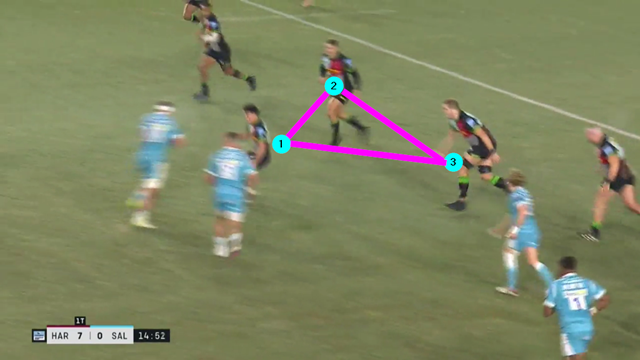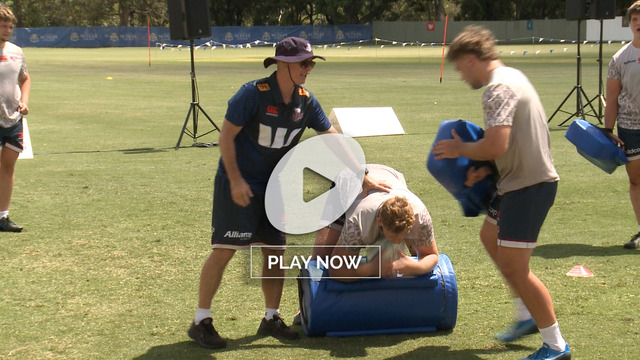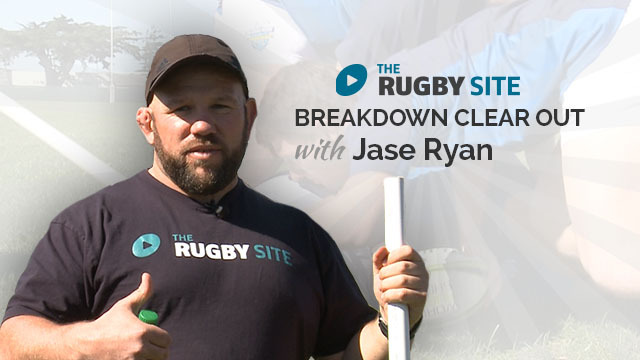All rugby teams, at any level of the game, need to strike the right balance between making tackles and soaking up pressure defensively, and looking for pilfers or steals to get the ball back into their own hands. Too many tackles and the attack may wear you down. Too many on-ball attempts and you can leave yourself short of number in the line.
The value of that balance has been brought into even sharper focus by the 2020 Breakdown Guidelines, which have led to much faster ruck resolutions than previously. The leading pilferer or ‘jackler’ in the English Gallagher Premiership is the Harlequins #7 Will Evans, with nine takeaways after eight rounds of competition.
Evans takes up the story of how the function of the ‘jackler’ has changed:
“When I first started playing, about eight or nine years ago, you had to basically have the ball in your hands for about 10 seconds before [the referees] awarded or gave you anything.
“Nowadays if you lift the ball off the floor and you try and rip the ball away and someone doesn’t let you do that, the refs will quite rightly recognise it and give you something.” https://www.rugbypass.com/news/will-evans-the-stats-dont-back-it-up-when-they-say-it-is-dangerous-harlequins/
As the role of the jackler has changed, so it has attracted quicker, more dynamic physical types to the role. The physical blockbusters like David Pocock, who could stay on-ball while enduring a hail of multiple, aggressive cleanouts are an increasingly becoming a rare breed. Now it is more about getting in and out before the cleanout can apply itself fully.
Harlequins like to play off the counter or from turnover ball, so the value of players like Evans is enhanced, because that is exactly what they provide:
“This team, especially with our dangerous back three and the backs we have got, are really explosive, [they] can score from tries from anywhere, so it’s important you have people to get the ball back on transitions because they can light it up.
“If you can just stick your head in there, pop up with the ball when teams aren’t really expecting it, you can get a lot of tries from it. Over the past three, four seasons, not just me but this back row that I’ve been playing in, have been trying to facilitate those explosive lads.”
In fact, the responsibility for jackling extends well into the backline, with backs like Springbok Andre ‘the Giant’ Esterhuizen and wing Louis Lynagh well able to stick their heads in over the tackle ball.
Harlequins’ emphasis on winning breakdown turnovers has led to some fascinating tweaking of responsibilities in the defensive line. In the recent EP match against Sale Sharks, Quins won six pilfers largely by reversing the traditional duties in the defensive line. Instead of heavyweight #12 Esterhuizen and #7 Evans carrying most of the tackling load, they were often employed as ball-stealers operating hidden behind the line, with the first-up stops left to smaller, quicker defenders.
Take a look at this three-phase lineout sequence in the first quarter:

Attacking teams will often run plays straight at the opposing #7, to force him to become tackler and take him out of the contest for the ball afterwards, and that is what happens to Will Evans on first phase. Quins’ reversal of the typical defensive template becomes evident on 2nd phase, <b.where all 80 kilos and 5’9 of outside-half Marcus Smith [“1”], rather than the 115 kilos of Esterhuizen [“2”] or 120 kilos of Joe Launchbury [“3”] is fore-fronted to tackle Sale’s big South African #8 Dan Du Preez.
The idea is to burn the smaller, quicker types to cut down the attacker’s space, with the potential jacklers waiting to pounce behind them, at the base rather than the point of the ‘tackle triangle’. It was a case of ‘rinse and repeat’ on third phase, with a turnover resulting:

On this occasion, it is #13 Will Joseph and #14 Nick David who jam up to make the stop, with Esterhuizen and Evans tucked away behind them to finish off with a double-jackle turnover.
It was a repeated theme:
Smith again absorbs the brunt of the first contact with Du Preez, with Evans sitting off as tackle-assist to convert stop to turnover. The process looked only slightly different on kick-chase:
There is a similar role-reversal, with the quicker chaser [Quins #15 Tyrone Green] winning the race to the receiver and making first contact, and the forward [or heavy-duty jackler] as second man in – open-side flanker Evans, once more coming within an ace of making turnover on the deck.
Summary
As Will Evans commented in his interview, the [forward and midfield] jacklers are there to provide transition attack ball for the back three, but the back three – and other smaller men like #10 Smith and centre Joseph – also have an important role in cutting down space, making the initial stop and creating a platform for the steal in the first instance. It is a reciprocal relationship, a two-way road to the ultimate nirvana of a counter-attacking score.













.jpg)
.jpg)





_no_button.jpg)

